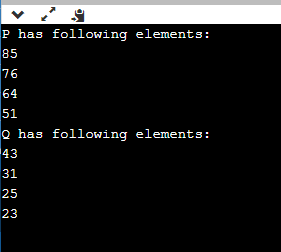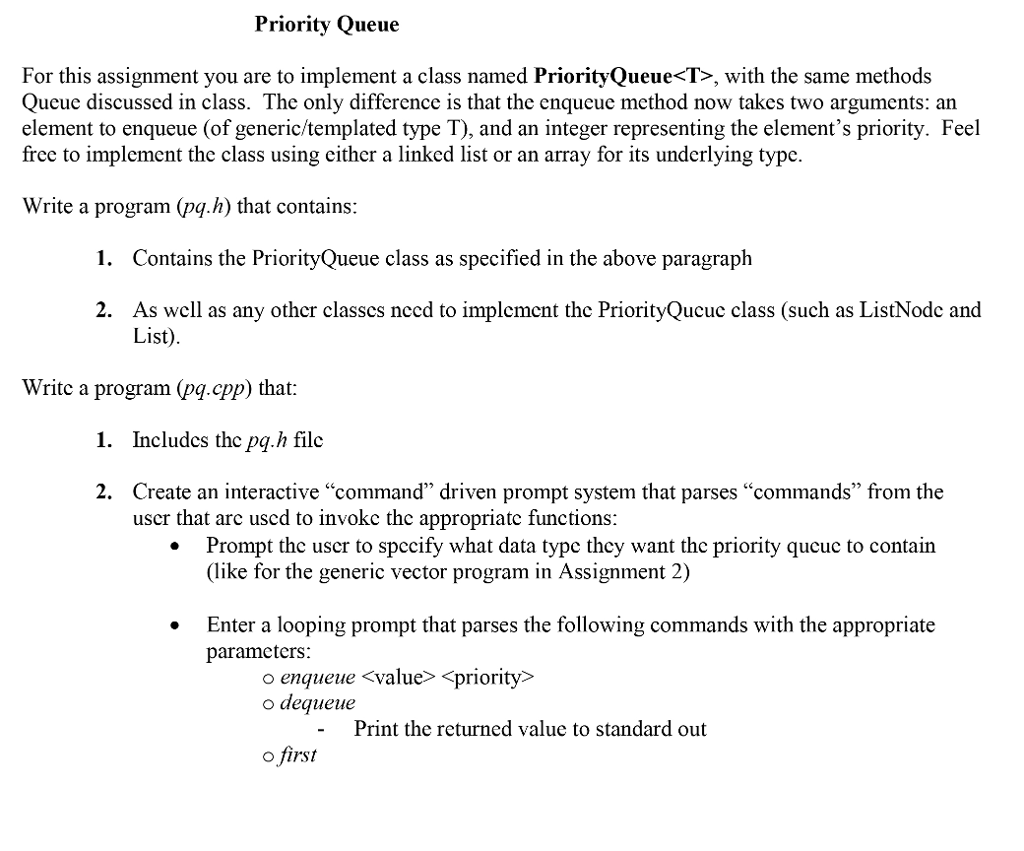


This ia also a great way to remove a specific element from a priority queue. that line deletes the element 30 from the priority queue

#CPP PRIORITY QUEUE CODE#
This code can be seen below: priority_queue pq Thie method will keep the original priority queue without the element that needs to be deleted. Along with creating a new priority queue without the desired element to remove, one can utilize the erase function. This method goes along with method two as there is no specific remove element function in the priority queue. There are a couple other ways to delete elements in a priority queue which we will look at next. This would require an additional O(n) space complexity and would take O(n) time. This is a great way to remove a specific element without doing too much work. An example of using the pop function on a priority queue is shown below: priority_queue pq After deleting the top element, the next highest priority element becomes the new top element in the priority queue. It means that the element with the highest priority is deleted from the priority queue. The pop() function removes the top element from the priority queue. Pop(): The simplest and most common way to delete an element from the priority queue is by using the pop() function. The 4 Different ways to delete elements in a priority queue in C++ STL are: In this essay, we will discuss different ways to delete elements in a priority queue using C++ STL. C++ STL provides various functions to manipulate priority queue, including deleting elements. The element with the highest priority in the priority queue always appears at the top. The priority queue automatically arranges elements in a particular order based on the priority. There are 4 different methods such as pop, clear and much more.Ī priority queue is a container in C++ STL (Standard Template Library) that allows users to store elements with different priorities. In this article, we have presented different ways to delete elements in a priority queue in C++ STL.


 0 kommentar(er)
0 kommentar(er)
